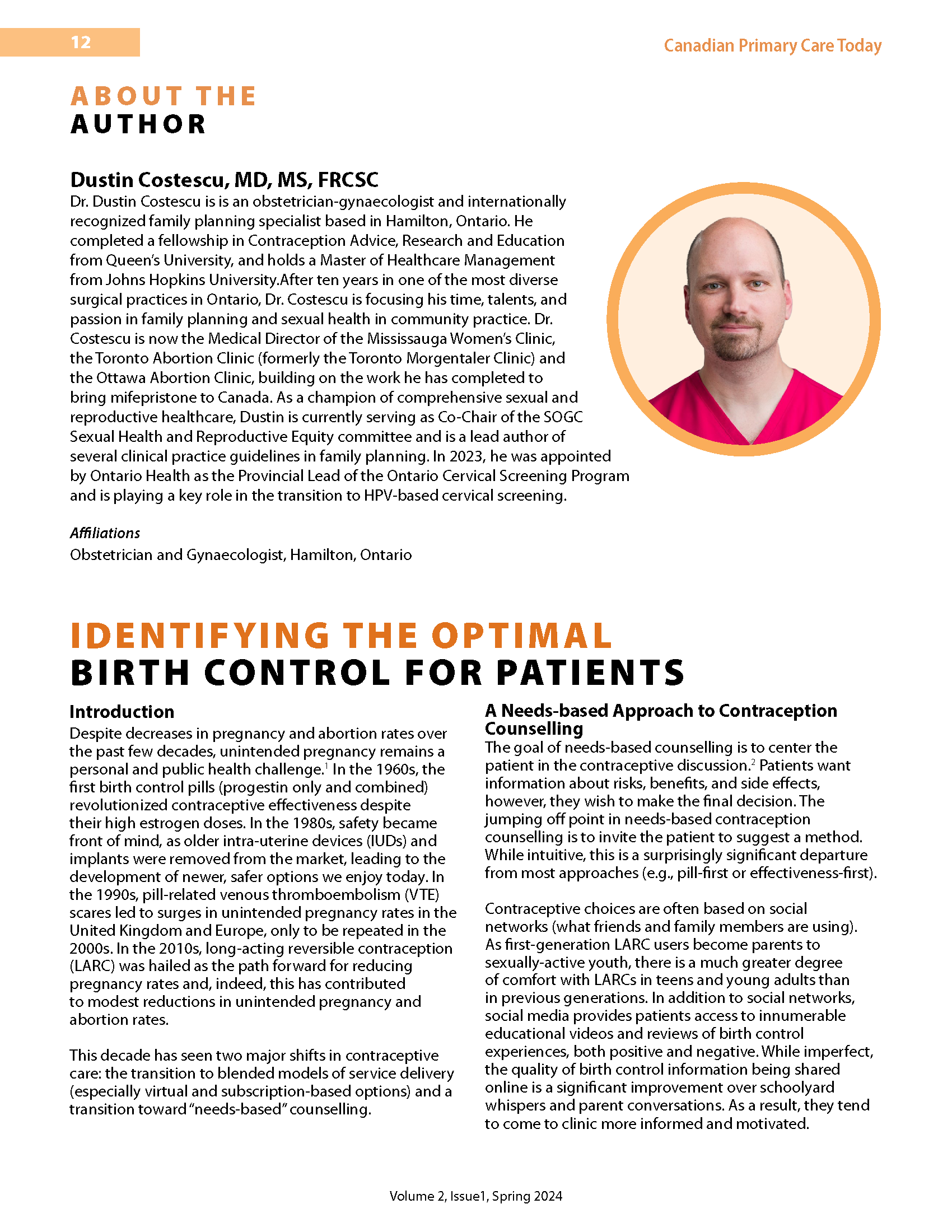Identifying the Optimal Birth Control for Patients
DOI:
https://doi.org/10.58931/cpct.2024.2124Abstract
Despite decreases in pregnancy and abortion rates over the past few decades, unintended pregnancy remains a personal and public health challenge.1 In the 1960s, the first birth control pills (progestin only and combined) revolutionized contraceptive effectiveness despite their high estrogen doses. In the 1980s, safety became front of mind, as older intra-uterine devices (IUDs) and implants were removed from the market, leading to the development of newer, safer options we enjoy today. In the 1990s, pill-related venous thromboembolism (VTE) scares led to surges in unintended pregnancy rates in the United Kingdom and Europe, only to be repeated in the 2000s. In the 2010s, long-acting reversible contraception (LARC) was hailed as the path forward for reducing pregnancy rates and, indeed, this has contributed to modest reductions in unintended pregnancy and abortion rates.
This decade has seen two major shifts in contraceptive care: the transition to blended models of service delivery (especially virtual and subscription-based options) and a transition toward “needs-based” counselling.
References
Black A, Guilbert E, Costescu D et al. Canadian Contraception Consensus. J Obstet Gynecol Can. 2015 Oct 37(10):936-42.
Bitzer J, Oppelt PG, Deten A. Evaluation of a patient-centred, needs-based approach to support shared decision-making in contraceptive counseling: the COCO Study. Eur J Contracept Reprod Health Care. 2021 Aug;26(4):326-33.
Black A, Guilbert E, Costescu D et al. Canadian Contraception Consensus (Part 3 of 4): Chapter 8 - Progestin-Only Contraception. J Obstet Gynecol Can. 2016 Mar;38(3):279-300.
Costescu DJ. Levonorgestrel-releasing intrauterine systems for long-acting contraception: current perspectives, safety, and patient counseling. Int J Womens Health. 2016 Oct 13:8:589-598.
Di Meglio G, Crowther C, Simms J, Canadian Paediatric Society Adolescent Health Committee. Contraceptive care for Canadian youth. Paediatr Child Health. 2018;23(4):271–277. DOI: https://doi.org/10.1093/pch/pxx192
Black A, Guilbert E, Costescu D, et al. Canadian Contraception Consensus Part 4 of 4 Chapter 9: Combined Hormonal Contraception. J Obstet Gynaecol Can. 2017 Apr;39(4):229-268.e5.
Centres for Disease Control. US Medical Eligibility Criteria for Contraceptive Use, 2016 (US MEC) https://www.cdc.gov/reproductivehealth/contraception/mmwr/mec/summary.html Accessed February 4, 2024.
Morimont L, Haguet H, Dogne JM et al. Combined oral contraceptives and venous thromboembolism: review and perspective to mitigate the risk front. Endocrinol. 2012:12 769187.
Lidegaard Ø, Milsom I, Geirsson RT, Skjeldestad FE. Hormonal contraception and venous thromboembolism. Acta Obstet Gynecol Scand. 2012; 91:769–778. DOI: https://doi.org/10.1111/j.1600-0412.2012.01444.x
Lidegaard O, Nielsen LH, Skovlund CW et al. Venous thrombosis in users of non-oral hormonal contraception: follow-up study, Denmark 2001-10. BMJ. 2012;344.
Steinberg JR, Marthey D, Xie L et al. Contraceptive method type and satisfaction, confidence in use, and switching intentions. Contraception. 2021 Aug; 104(2): 176–182.

Published
How to Cite
Issue
Section
License
Copyright (c) 2024 Canadian Primary Care Today

This work is licensed under a Creative Commons Attribution-NonCommercial-NoDerivatives 4.0 International License.
